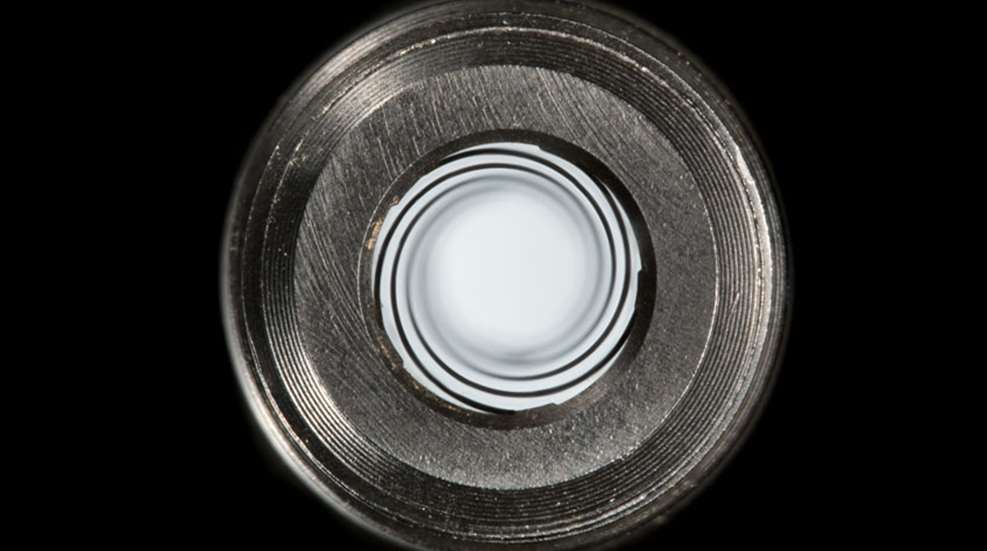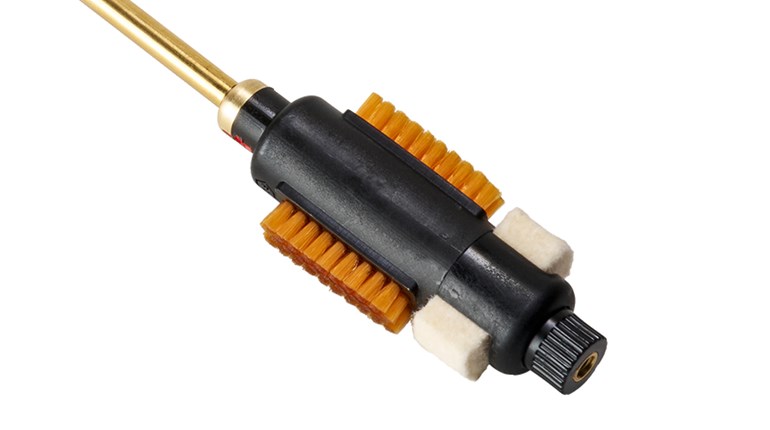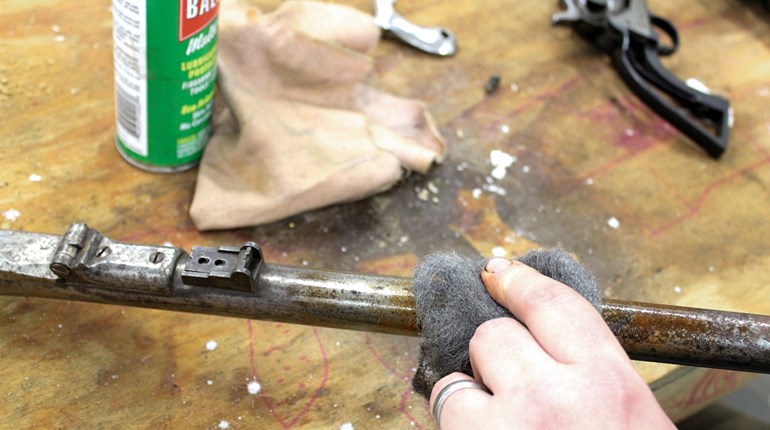
I recently acquired a pistol that has been in the family for decades. My grandfather originally bought it back in the 1970s for general use on the farm to get rid of varmints, both the two- and four-legged variety. It is a T/C Arms Contender, serial number 338XX chambered in .22 Hornet. When I first shot it with factory ammunition, it didn’t group at all, so I cleaned it as well as I could and tried again. The cleaning helped, but the hits on paper were still more like a shotgun pattern than a pistol group. I took it to our local gunsmith to see if he had any answers as to why the gun wouldn’t group the way I felt it should. He inspected the pistol, then cleaned the barrel down to bare metal. Afterward, he ran a bore scope down the barrel to see its real condition. Following the inspection, he urged me to buy a new barrel because it appeared that the reamer had chattered during manufacturing, which subsequently created rough spots that quickly collect fouling. He said he doubted if it could ever be made to shoot accurately for any length of time before the fouling re-established itself and groups returned to shotgun-pattern size. For sentimental reasons, if nothing else, I have elected to keep the barrel. Is there anything I can do to the bore to keep it shooting longer without constantly having to clean it down to bare metal?
J.B. Wallace, via e-mail
Your problem is not as unique as you might think. I have seen rifle, pistol and revolver barrels that look OK when peering through one end or the other, but once examined through a bore scope you would wonder how they shot as well as they did. Over the years I have encountered barrels that had an excess of machining marks left in the bore. These marks are pronounced enough that they couldn’t be removed by lapping the barrel. The marks are usually left when the bore is reamed and still remain after the barrel is rifled.
Fortunately, I knew Frank Mrozek, founder of Sentry Solution Products, before he sold the company and later on left us for the big shooting range in the sky. In discussing bore roughness and the troubles it produced with Mrozek, he asked if we could try an experiment with one of his products and see if it could help or even cure the problem. We experimented with a 1911 chambered in .45 ACP that fouled terribly with lead bullets, a T/C Arms Contender, similar to yours, chambered in .223 Rem. and an AR-15 with a “match-grade” barrel that somehow left the factory without being tested for accuracy.
We cleaned each barrel down to bare metal and fired five, five-shot groups to provide a baseline for the experiment. After the initial groups were fired we cleaned each barrel down to bare metal again and applied Sentry Smooth-Kote to each bore. We heated the barrels until they were warm to the touch with a heat gun and then applied three Smooth-Kote-saturated patches to the bore, allowing a few minutes between applications for the material to dry. The carrier for the material is alcohol, so a few minutes between patches was all that was needed. We allowed 24 hours for the material to cure before returning to the range.
There, we carefully duplicated the shooting procedures that we had done earlier and, to our surprise, we discovered that average group size was reduced significantly with each gun. In addition, the residue left in the barrels was noticeably less. After shooting 100 rounds through each firearm, we removed the loose fouling with a nylon bore brush and reapplied the Smooth-Kote while the barrels were still warm. We continued to shoot and were amazed at how little fouling collected in the bores and how the improved accuracy had become the norm for each gun.
I was curious as to what would happen if I removed the Smooth-Kote. So, I got a tight-fitting bronze bore brush coupled with bore solvent and removed the Smooth-Kote completely from the T/C Arms barrel chambered in .223 Rem. To my surprise and dismay, the test gun returned to its original inaccuracy and fouling built up as it had before.
Afterward, I later retreated that barrel and was pleased to see accuracy and performance return to the same level as the first time the barrel was originally treated. I have removed and reapplied the Smooth-Kote several times since, each time with the same results.
Though this is far from a comprehensive test, the aforementioned chain of events successfully illustrates the potential of positive results for your pistol. Smooth-Kote can be found at your local gun shop, the Sentry Products Group website or other online sources.





































